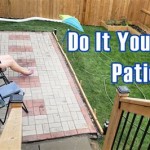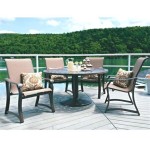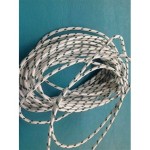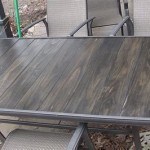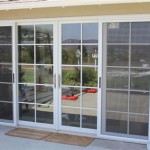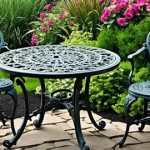Refinishing a Wrought Iron Patio Table: A Comprehensive Guide
Wrought iron patio furniture offers durability and timeless appeal, making it a popular choice for outdoor spaces. However, exposure to the elements inevitably leads to rust, weathering, and a diminished aesthetic. Refinishing a wrought iron patio table is a cost-effective way to restore its original beauty and extend its lifespan. This process involves careful preparation, appropriate material selection, and meticulous application to achieve a long-lasting and visually appealing result.
The longevity of wrought iron furniture depends heavily on the effectiveness of its protective coating. Original factory finishes offer initial defense against moisture and oxidation, but these coatings degrade over time. Neglecting maintenance allows rust to penetrate the metal, weakening its structure and creating an unsightly appearance. Refinishing addresses these issues by removing existing rust, applying a rust-inhibiting primer, and providing a durable topcoat that shields the iron from future environmental damage.
This guide provides a step-by-step approach to refinishing a wrought iron patio table. It outlines the necessary tools and materials, details the surface preparation techniques, and explains the proper application methods for primer and paint. Adhering to these instructions will help ensure a successful refinishing project that revitalizes the patio table and enhances the outdoor living space.
Key Point 1: Essential Tools and Materials for Refinishing
Successful refinishing requires specific tools and materials. Gathering these items beforehand streamlines the process and minimizes interruptions. The following list encompasses the essential components for achieving a professional-grade finish.
Safety Gear: Safety glasses are paramount to protect the eyes from flying debris during surface preparation. Work gloves safeguard the hands from sharp edges, rust particles, and chemicals in the cleaning and painting materials. A dust mask or respirator is crucial for preventing inhalation of rust particles, paint fumes, and other potentially harmful substances.
Cleaning Supplies: A wire brush is indispensable for removing loose rust and debris from the wrought iron surface. Different sizes and shapes of wire brushes, including hand-held and drill-mounted options, may be necessary to access intricate areas. A scraper helps to remove flaking paint or stubborn rust patches. Trisodium phosphate (TSP) or a similar degreasing cleaner, mixed with water, is essential for thoroughly cleaning the surface and removing any grease, oil, or dirt. Rags or paper towels are required for wiping down the surface after cleaning.
Rust Removal Tools: Sandpaper, varying in grit from coarse (e.g., 80-grit) to fine (e.g., 220-grit), is necessary for smoothing the surface after rust removal. Power sanders, such as orbital or rotary sanders, can significantly expedite the sanding process, especially for larger surfaces. A rust converter is a chemical solution that transforms existing rust into a stable compound, preventing further corrosion. This is particularly useful for areas where complete rust removal is difficult.
Painting Supplies: Rust-inhibiting primer is crucial for creating a protective barrier against future rust formation. Choose a primer specifically designed for metal surfaces. Paint suitable for outdoor use, such as oil-based or acrylic enamel paint, provides a durable and weather-resistant finish. Ensure the paint is compatible with the chosen primer. Paintbrushes, rollers, or spray paint equipment are used to apply the primer and paint. The selection depends on the size and complexity of the table's design. Painter's tape masks off areas that should not be painted, such as the table legs' bottoms if resting on a patio surface. Paint thinner or mineral spirits are necessary for cleaning brushes and equipment after painting.
Optional Supplies: A drop cloth protects the surrounding area from paint splatters. A putty knife can be useful for filling in minor imperfections in the metal surface before painting. A rust remover solution can aid in soaking heavily rusted areas to loosen the rust before mechanical removal.
Key Point 2: Surface Preparation Techniques for Optimal Results
Proper surface preparation is the most critical step in refinishing wrought iron. A well-prepared surface ensures that the primer and paint adhere properly, resulting in a durable and long-lasting finish. Neglecting this step can lead to premature peeling, chipping, and rust recurrence.
Initial Cleaning: Begin by thoroughly cleaning the table to remove any dirt, grime, grease, and loose debris. Mix TSP with water according to the manufacturer's instructions and scrub the table with a stiff brush. Rinse thoroughly with clean water and allow the table to dry completely. This step removes contaminants that could interfere with rust removal and primer adhesion.
Rust Removal: Remove loose rust using a wire brush. Scrub vigorously, paying attention to areas where rust is heavily concentrated. For stubborn rust, use a scraper to chip away the buildup. After the initial wire brushing, use sandpaper to smooth the surface. Start with a coarse grit (80-grit) to remove remaining rust and then move to a finer grit (220-grit) to smooth out the scratches. For large surfaces, a power sander can significantly reduce the effort and time required. When using a power sander, exercise caution to avoid damaging the metal.
Rust Conversion (Optional): If complete rust removal is not possible, apply a rust converter according to the manufacturer's instructions. Rust converters chemically transform the existing rust into a stable compound, preventing further corrosion. This is particularly useful in hard-to-reach areas or on intricately designed tables. Allow the rust converter to dry completely before proceeding to the next step.
Final Cleaning: After rust removal and/or rust conversion, clean the table again with TSP and water to remove any residual dust or debris. Rinse thoroughly with clean water and allow the table to dry completely. This final cleaning ensures that the surface is free of contaminants that could affect primer adhesion.
Inspection and Repair: Inspect the table for any imperfections, such as dents, scratches, or pits. Fill in minor imperfections with a metal filler or putty, following the manufacturer's instructions. Sand the filler smooth after it has dried completely. This step ensures a smooth and uniform finish after painting.
Key Point 3: Primer and Paint Application for a Durable Finish
The application of primer and paint is crucial for protecting the wrought iron table from the elements and providing a visually appealing finish. Selecting the right products and applying them correctly is essential for achieving a durable and long-lasting result.
Primer Application: Apply a rust-inhibiting primer specifically designed for metal surfaces. Choose a primer that is compatible with the chosen paint. Apply the primer in thin, even coats, following the manufacturer's instructions. Multiple thin coats are preferable to a single thick coat, as they provide better adhesion and prevent drips and sags. Allow the primer to dry completely before proceeding to the next step. The drying time will vary depending on the type of primer and the ambient temperature and humidity.
Paint Application: Select a paint suitable for outdoor use, such as oil-based or acrylic enamel paint. Ensure the paint is compatible with the chosen primer. Apply the paint in thin, even coats, following the manufacturer's instructions. Use a paintbrush, roller, or spray paint equipment, depending on the size and complexity of the table's design. If using a paintbrush or roller, choose high-quality tools that will not leave brush marks or lint on the surface. If using spray paint, hold the can approximately 10-12 inches from the surface and apply the paint in a sweeping motion, overlapping each stroke slightly. Avoid applying too much paint in one area, as this can lead to runs and drips.
Multiple Coats: Apply at least two coats of paint, allowing each coat to dry completely before applying the next. Multiple coats provide better coverage, durability, and protection against the elements. Lightly sand the surface with fine-grit sandpaper (e.g., 320-grit) between coats to smooth out any imperfections and improve adhesion.
Drying and Curing: Allow the paint to dry and cure completely before using the table. The drying time will vary depending on the type of paint and the ambient temperature and humidity. Consult the manufacturer's instructions for specific drying and curing times. Avoid placing heavy objects on the table until the paint is fully cured, as this can damage the finish.
Clean Up: Clean brushes and equipment immediately after use with paint thinner or mineral spirits, following the manufacturer's instructions. Dispose of used paint, primer, and cleaning materials properly, according to local regulations.
Following these steps meticulously will result in a beautifully refinished wrought iron patio table that enhances your outdoor space and provides years of enjoyment. Regular cleaning and maintenance will further extend the lifespan of the refinished surface.

How To Spray Paint Metal Outdoor Furniture Last A Long Time H2obungalow

26 Wrought Iron Makeovers Ideas Patio Furniture Makeover

How To Paint Patio Furniture With Chalk

How To Paint Metal Patio Furniture Green With Decor

How To Keep Wrought Iron Furniture Rust Free

How To Paint Metal Patio Furniture

Best Ways To Paint Wrought Iron True Value

Reader Re Do A Colorful Patio Furniture Makeover Painting

Outdoor Furniture Transformation

How To Clean And Repaint Wrought Iron Patio Furniture White Lilac Farmhouse


